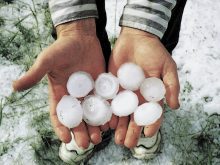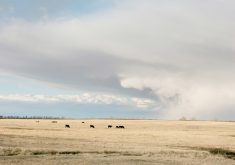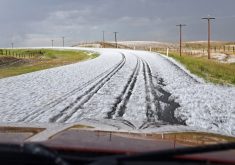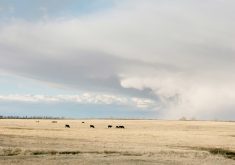Saskatchewan hail claims are already double the usual number for this time of year, says the Canadian Crop Hail Association.
About 2,200 claims had been filed by the middle of last week, and CCHA chair Murray Bantle of Co-operative Hail Insurance Co. in Regina said July 6 that he expected many more.
“We’re snowed under,” he said. “For this early in the year, we’re up quite a bit.”
Southern Alberta and Manitoba have also seen higher claim numbers as widespread storms moved across the Prairies in late June and early July.
Read Also

Farming Smarter receives financial boost from Alberta government for potato research
Farming Smarter near Lethbridge got a boost to its research equipment, thanks to the Alberta government’s increase in funding for research associations.
Alberta was reporting 600 claims last week while Manitoba was near 500.
A number of isolated storms since mid-June have affected all provinces, but the June 26 storm that swept from Consul in southwestern Saskatchewan to the east and as far north as Preeceville, Sask., was among the largest.
Alberta reported significant hail damage July 1 in a line from Bowden to north of Trochu and from Didsbury to Munson.
In Manitoba, the largest storm so far was July 4 in the south, affecting crops near Tilston, Lyleton, Deloraine, Boissevain, Mather, Cartwright, Killarney and Snowflake. Damage has been reported as extremely severe.
Bantle said in many cases it is too soon to know how much crops have been affected. Many adjusters will defer their assessments and go back to see if crops rebounded.
However, he said hail would have a significant effect on maturing crops in another two weeks.
Co-op Hail maps every storm on a grid, and Bantle said it is interesting to see how hail hits.
“Hail hits and it lifts and it goes and it may take miles to build up again.”
One crop can be pounded into the dirt yet 50 metres away another crop is virtually untouched.
There are places that are so-called hail alleys and there are places that almost never see hail. Bantle said these are the areas where producers usually buy coverage.
The premiums for coverage in places that are hit frequently by hail will be higher, but producers know the odds are good they will need the insurance, he said.
On the other hand, the rates are low enough in places where hail is infrequent that insurance is affordable.
“To me, hail is your greatest risk,” Bantle said. “We have drought, we have frost, we have insects.… Let’s face it, hail is every year. You just don’t know where it’s going to be.”

















